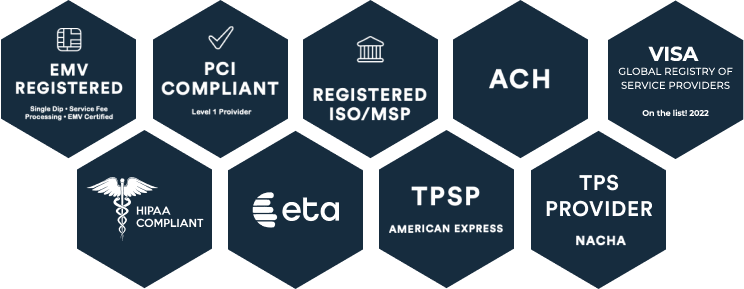How to Unlock Hidden Insights in Your Government Agency’s Revenue Report
Table of Contents
For government agencies, a revenue report is not just a financial document. It’s a strategic tool to guide budgetary decisions, resource allocation, and long-term government planning—ultimately contributing to the overall efficiency of government operations.
Despite the breadth of information in revenue reports, agencies often face challenges in interpreting and leveraging this data effectively. Varying report standards, complex financial data, and the sheer volume of information can make it challenging to grasp the insights available within a revenue report with ease.
Raw revenue data can transform into actionable insights with the proper tools and methodologies. By exploring best practices and strategic approaches, government agencies and municipalities can unlock the full potential of their revenue reports. Here’s how.
Identifying Revenue Trends and Patterns
A revenue report is a comprehensive record of income sources, expenditures, and financial trends, providing a transparent and detailed overview of the agency’s financial health. Analysis of revenue trends and patterns can help government agencies optimize their performance and make better, more informed decisions.
Analyzing Revenue Trends Over Time
It’s common for government revenue streams to experience fluctuations that correlate with the calendar year. These ebbs and flows can occur:
- Seasonally
- Monthly
- Quarterly
- Yearly
A revenue report is crucial in identifying notable patterns to help organizations anticipate periods of elevated revenue or potential lulls. This analysis allows for effective revenue cycle management in relation to the time of year. A pattern-based, historical perspective empowers agencies to navigate the future with foresight and a lens of adaptability.
Spotting Potential Anomalies and Discrepancies
For adequate financial oversight, integrity in revenue reporting relies on the ability to discern potential anomalies and discrepancies. This ability requires a more vigilant approach to identifying irregularities in a revenue report—and addressing them immediately.
Detecting Irregularities
Sudden or unexpected anomalies identify opportunities that demand attention but may also signify underlying issues. Critical aspects of anomaly detection include identifying the following:
Anomalies can arise from various circumstances, including unanticipated events, overlooked trends, or errors. Anomalies may even be a sign of fraud. A lack of consistency in a revenue report underscores the importance of precise analysis.
Addressing and Rectifying Anomalies
Upon identification of any discrepancies or unusual trends in a report, swift action is crucial. Addressing anomalies preserves the accuracy of a revenue report and safeguards an agency and its citizens from decisions based on flawed data or, worse, fraud. This process involves:
- Acknowledging the anomaly or discrepancy
- Investigating any root cause(s)
- Identifying adjacent or related anomalies
- Implementing corrective measures to prevent recurrence
Such an approach often requires robust investigative procedures that monitor key revenue report metrics. Taking these steps upholds trust, transparency, and reliability, which are crucial for government agencies on which the public relies.
Comparing Revenue Performance
Analyzing revenue performance is fundamental in determining financial sustainability and operational efficiency. To accomplish this, government agencies and municipalities must benchmark their revenue performance against civic standards and internal goals. Setting points of reference provides essential insights into the agency’s fiscal standing.
Benchmarking Fiscal Performance
Benchmarking is crucial when evaluating an agency’s performance within a government landscape. Revenue reporting helps an organization compare its performance with predefined points of reference to identify areas for improvement and optimization. Reporting helps contextualize individual agency or municipality performance in a greater forum, enhancing and spotlighting successes when serving the public.
Analyzing Variations in Revenue Generation
Many factors can contribute to fluctuations in revenue generation, and understanding each helps government organizations develop strategies to adapt and evolve. These fluctuations may be influenced by:
- Shifts in public demand
- Changes in economic conditions
- Various internal factors
Regardless of their origin, meticulous analysis can identify opportunities, mitigate financial risks, and make future-focused decisions.
Utilizing Revenue Insights for Decision-Making
Revenue reports contain valuable insights a government agency can leverage to optimize its strategy, allocate resources, and align financial decisions with agency goals. When financial decisions are made with organizational priorities in mind, decision-makers can steer the agency in a direction that best serves the public interest. The insights available in a revenue report serve as a powerful source of information for these officials.
5 Strategies for Optimizing Government Revenue Streams
A steady, sustainable flow of revenue is crucial for agencies to fulfill their responsibilities. These insights form the basis for effective strategies to optimize revenue streams:

- Continuous Monitoring and Evaluation: Regular assessments help evaluate the effectiveness of revenue-generating strategies, enabling timely adjustments.
- Revenue Stream Diversification: Agencies can explore multiple revenue sources, from tax and non-tax sources, to reduce dependence on any channel and mitigate risks associated with fluctuations.
- Participation in Public-Private Partnerships (PPPs): Collaborations with the private sector can bring additional resources to revenue-generating initiatives, projects, and services.
- Compliance and Enforcement Analysis: Strong compliance measures help ensure financial obligations and regulations are met, which can enhance revenue collection.
- Leveraging Technology and Innovation: Technological advancements, from advanced data analytics and revenue collection methods, can streamline processes and enhance efficiency.
Ultimately, government agencies can use revenue insights to ensure they direct financial resources toward initiatives that maximize their impact according to their objectives.
Predictive Analysis for Future Revenue Projections
Government finances exist in a dynamic environment embedded in a broader economic context. The ability to contextualize, predict, and project future revenue is a strategic advantage for effective fiscal planning. To leverage predictive analysis, government agencies can utilize data from revenue reports to make more informed predictions.
Making Informed Predictions with Historical Data
A wealth of historical revenue data is made available through revenue reporting. By understanding how historical revenue performance functions against an economic backdrop, agencies can analyze trends and patterns with a more nuanced view. This analysis involves a thorough consideration of several factors, including the following:
- Local economic conditions over time
- Economic indicators such as GDP, unemployment, and inflation
- Demographic shifts
- Changes in policy or legislation
Accurate revenue forecasting relies on advanced predictive procedures that bring factors such as these into full view. In these cases, predictive modeling techniques are essential. Integrating advanced analytical tools and methods allows agencies to maximize the impact of their revenue report analysis and gain a more accurate picture of future revenue possibilities and potential risks.
Enhancing Transparency and Accountability
Revenue reports offer a window into the financial workings of government agencies. They give a clearer picture of income, expenditure, and overall fiscal health. To enhance transparency and demonstrate government agency accountability, communicating the information gleaned from a revenue report is crucial, particularly to enable citizens and stakeholders to understand how public funds are collected, allocated, and utilized.
Building Public Trust Through Responsible Fiscal Management
Revenue reports can be considered compilations of valuable numerical data and instruments for building and reinforcing public trust. Before openly communicating any revenue insights, transparency in revenue reporting begins internally with credible, accurate reports.
It’s essential for government agencies to prioritize accuracy in reporting along all levels of revenue cycle management, which goes a long way in ensuring prudent use of public funds. This process alone can powerfully enhance public confidence.
Beyond the mere presentation of data, effective communication of insights should include:
- Accessible, comprehensible language
- Clear descriptions of revenue trends
- Notable impacts on public services
- The use of public forums on digital platforms
Engaging constituents through accessible channels fosters a more informed citizenry, proactively strengthening the bond of trust between the government and the public.
Continuing Improvements in Revenue Reporting and Analysis
Government agencies must employ effective financial management strategies to deliver essential services to citizens and fulfill civic responsibilities. Revenue reports play a crucial role in this process. Cutting-edge technologies and software solutions can powerfully enhance the efficiency of revenue cycle management and reporting.
CORE provides a thorough, end-to-end revenue management solution that streamlines the payment and revenue management processes for government agencies and municipalities. This solution enables continuous improvement in revenue reporting, making it easier to uncover valuable insights and maintain the highest governance standards.
Ready to Deliver Best-in-Class Payments?
The Definitive Guide to Modernizing the Government Payment Experience shared best practices to better engage your citizens.



